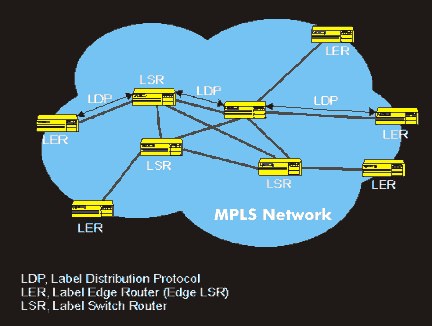label distribution protocol (MPLS) (LDP)
The Label Distribution Protocol (LDP) is a signaling protocol for establishing connections via Label Switched Paths( LSP) in Multi-Protocol Label Switching( MPLS).
The LDP protocol is used to negotiate labels between two Label Switch Routers( LSR) or between a Label Switching Router (LSR) and a Label Edge Router( LER).
The protocol recognizes label switch routers in an MPLS network, transmits messages using TCP and the User Datagram Protocol( UDP), is scalable and can therefore be easily expanded. During the bidirectional communication of messages and the exchange of labels, the Label Switch Routers establish a session and learn the respective forwarding class of the other router. The LDP protocol is standardized by the Internet Engineering Task Force( IETF) and published in RFC 3036.

